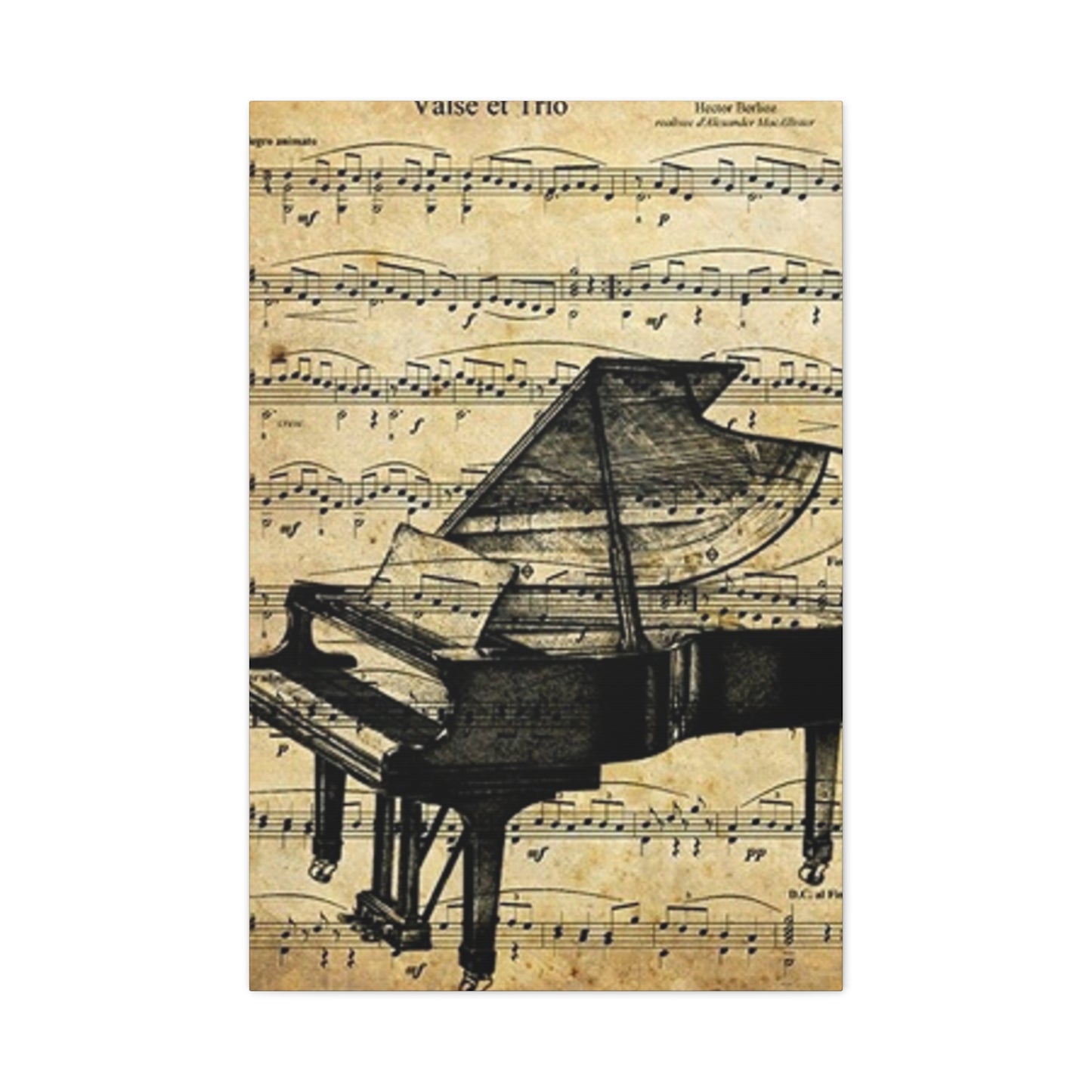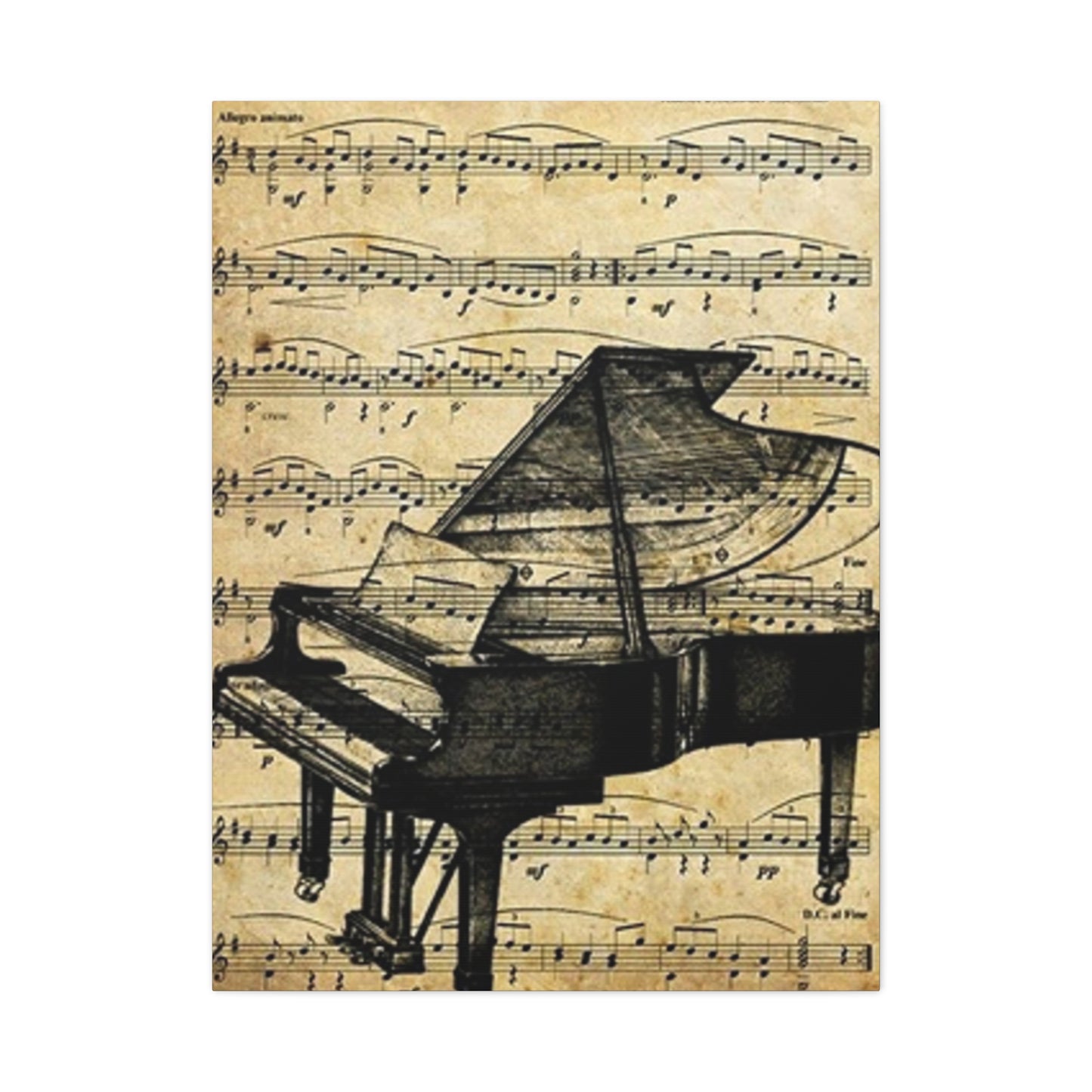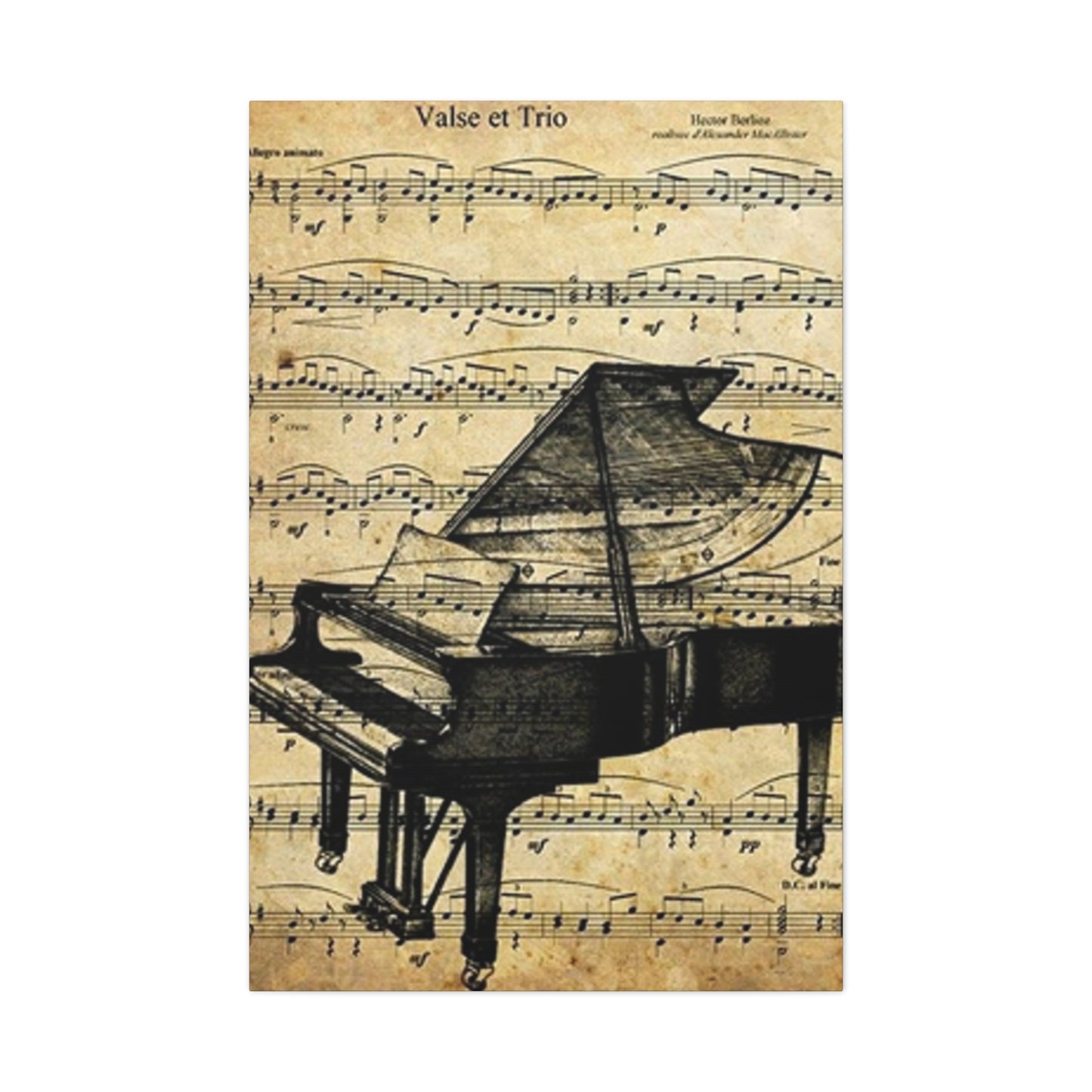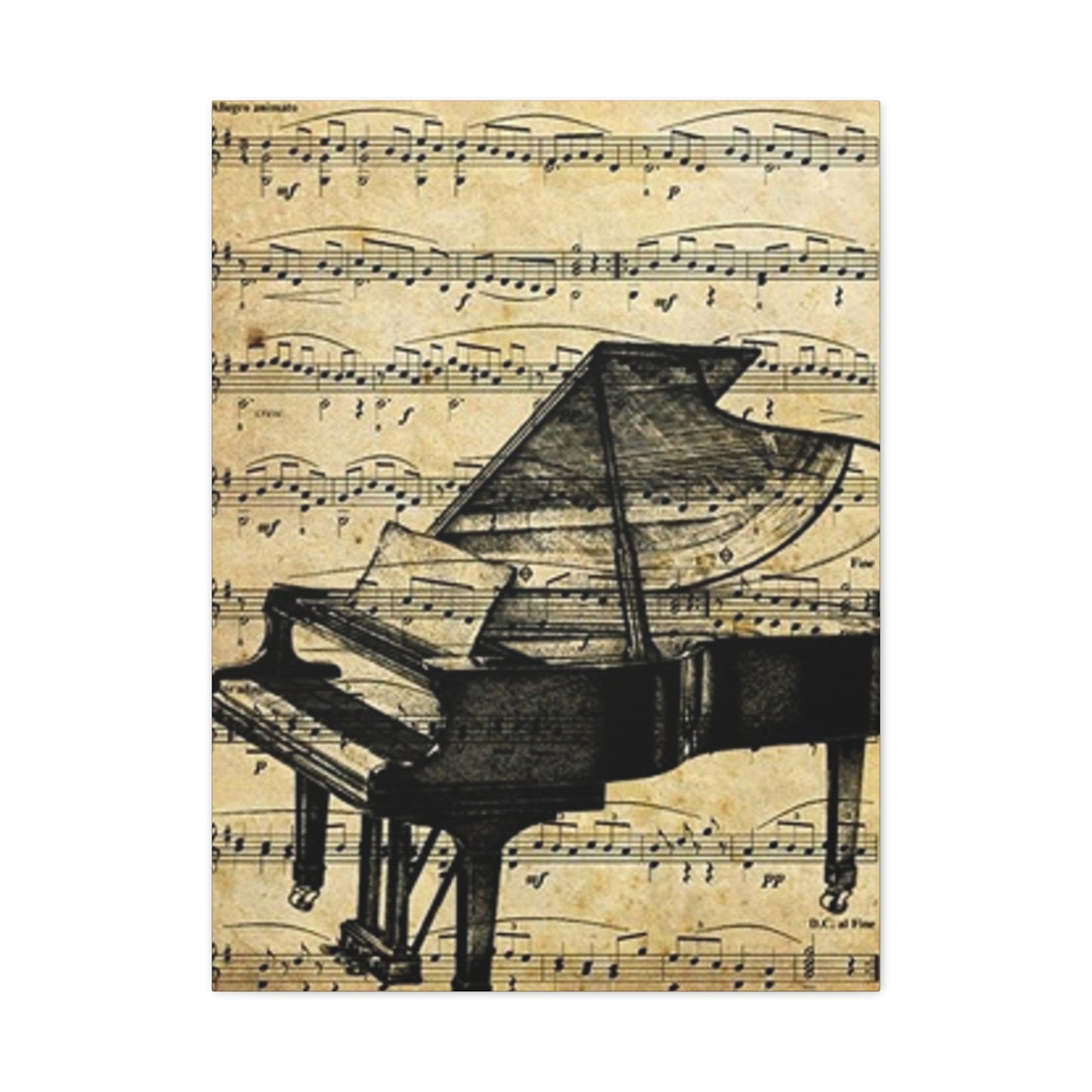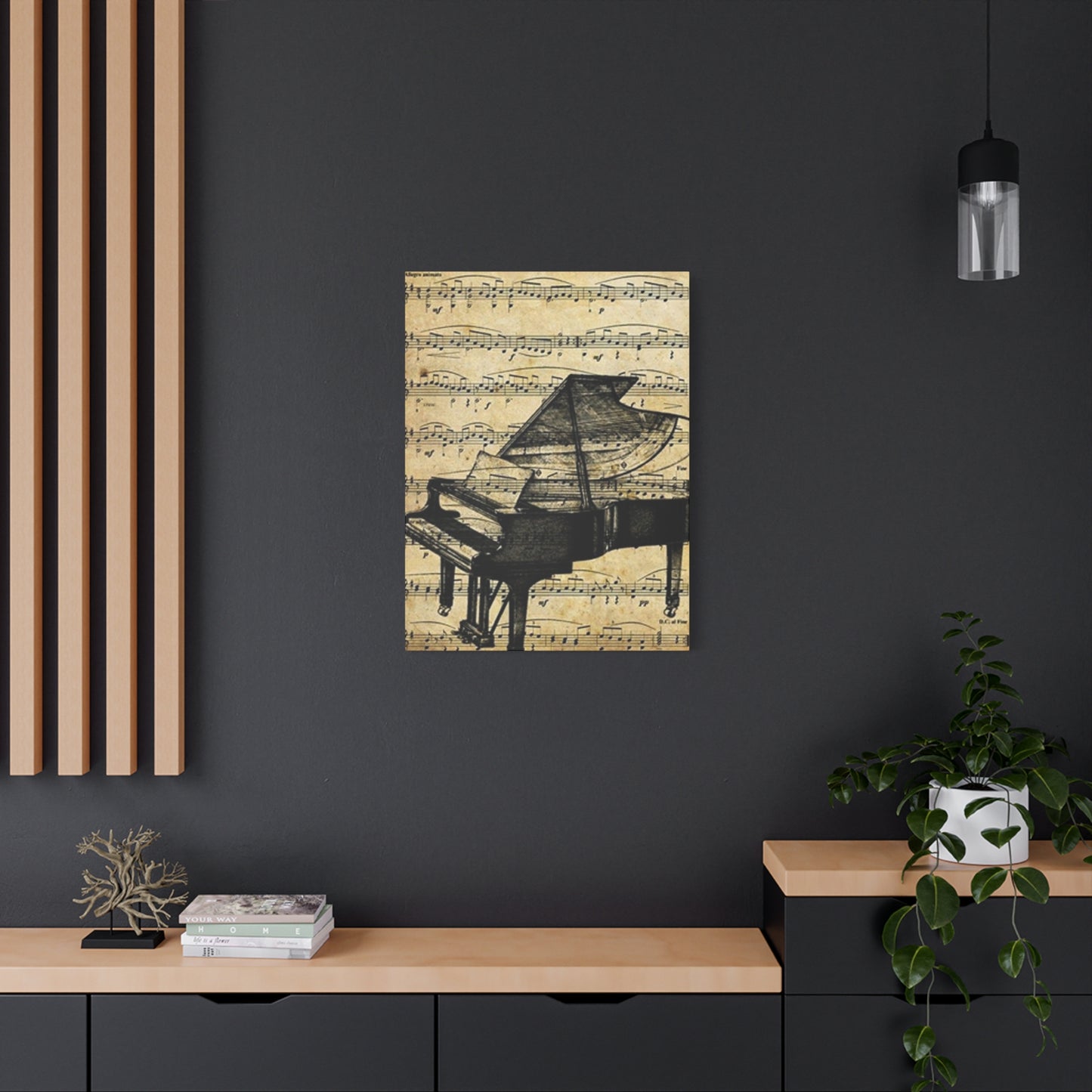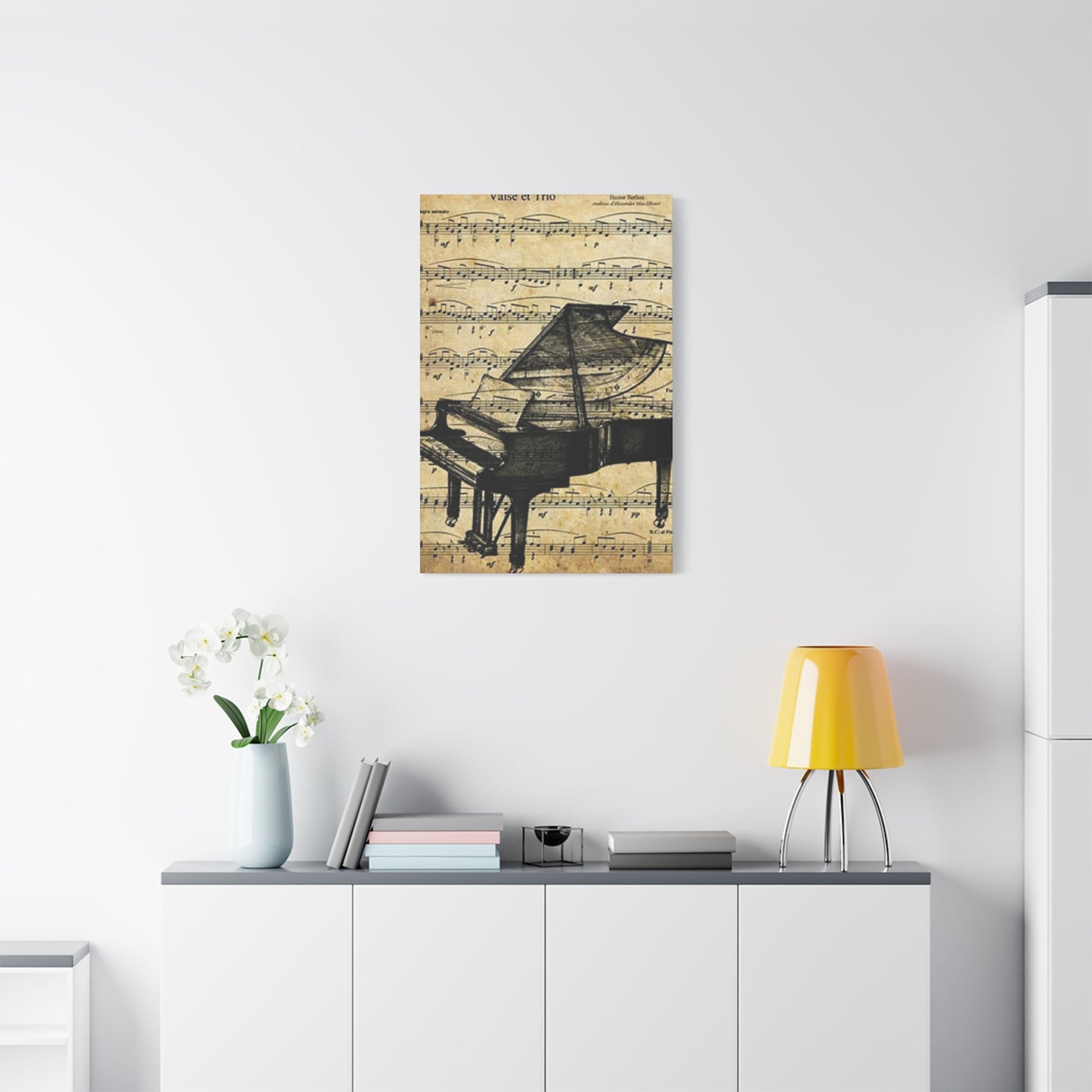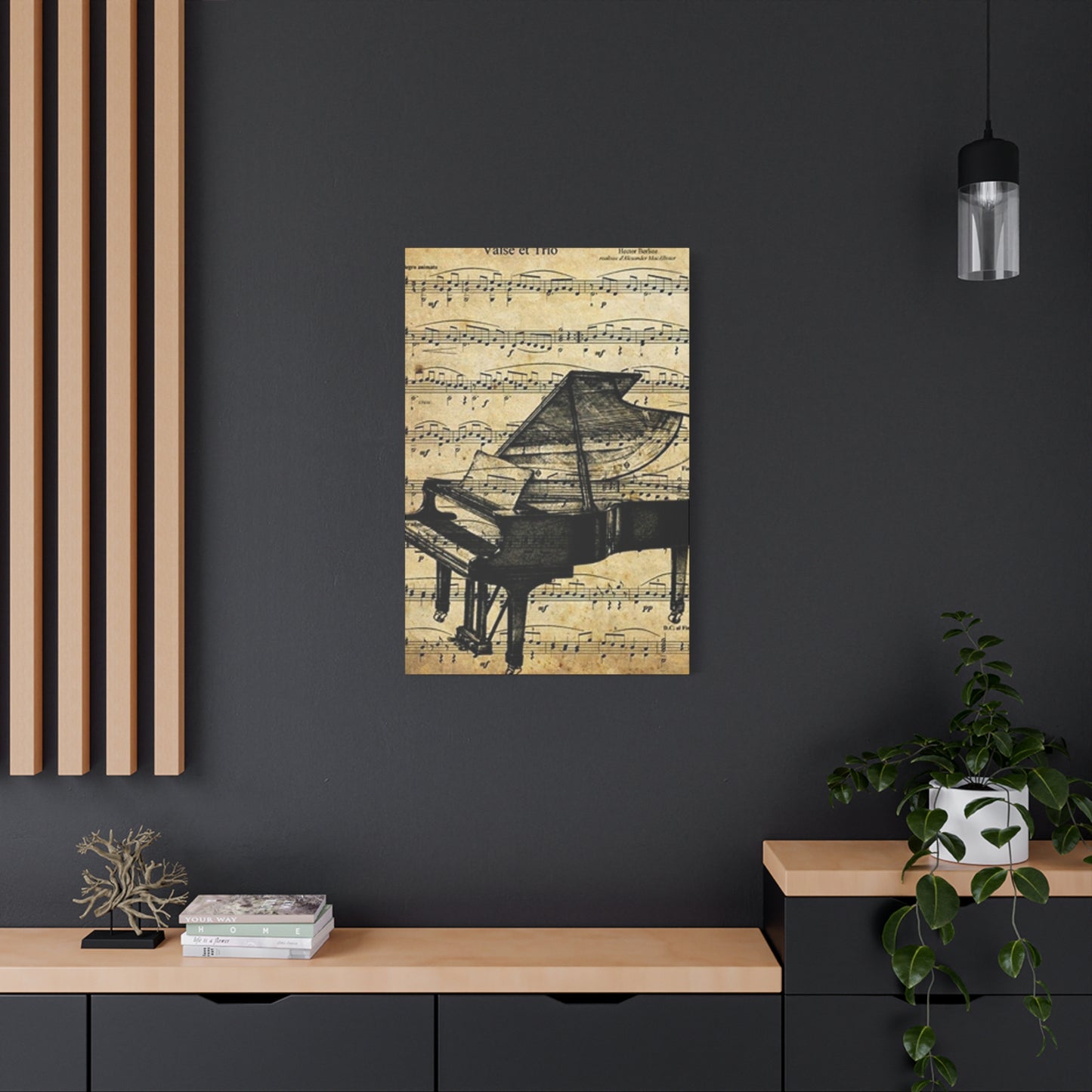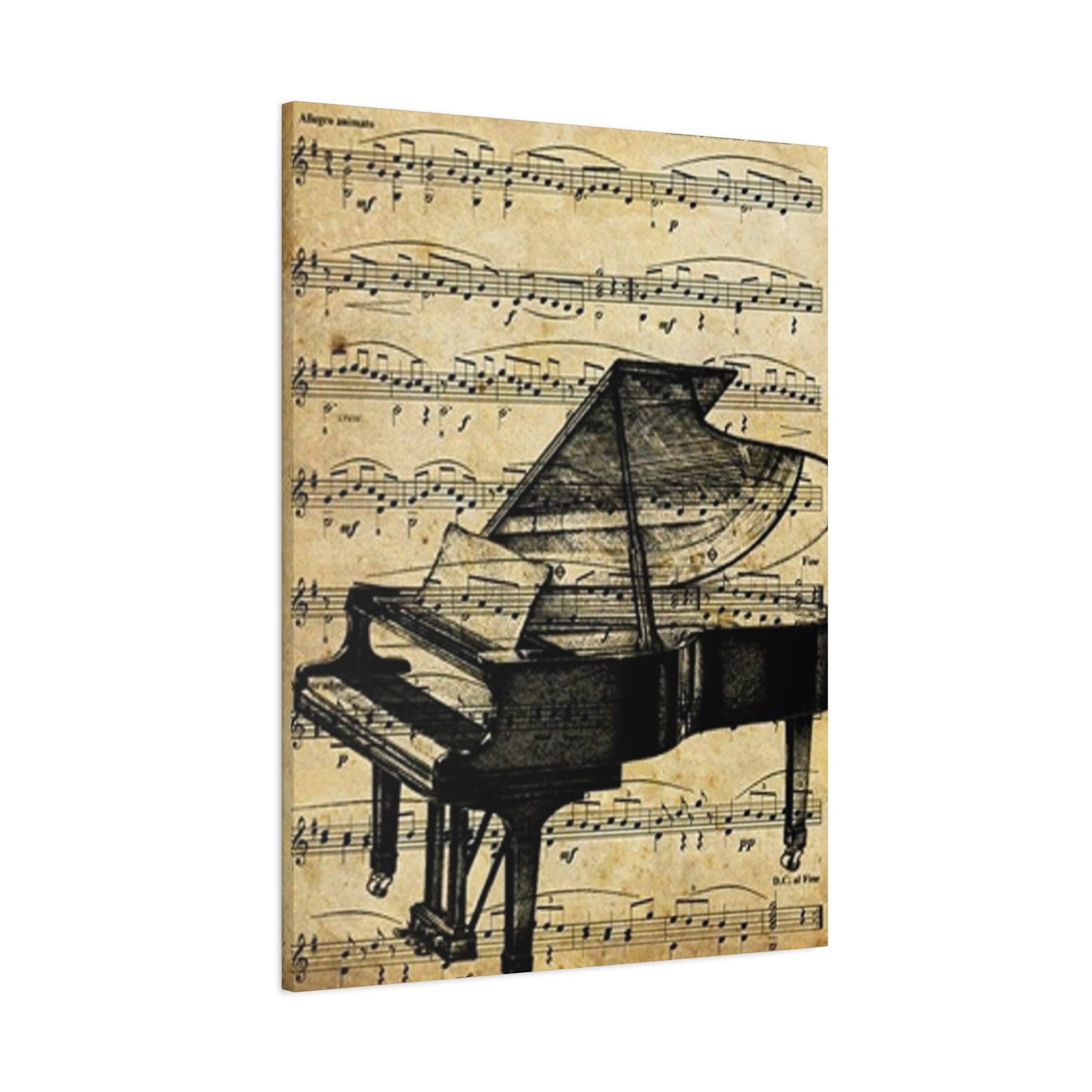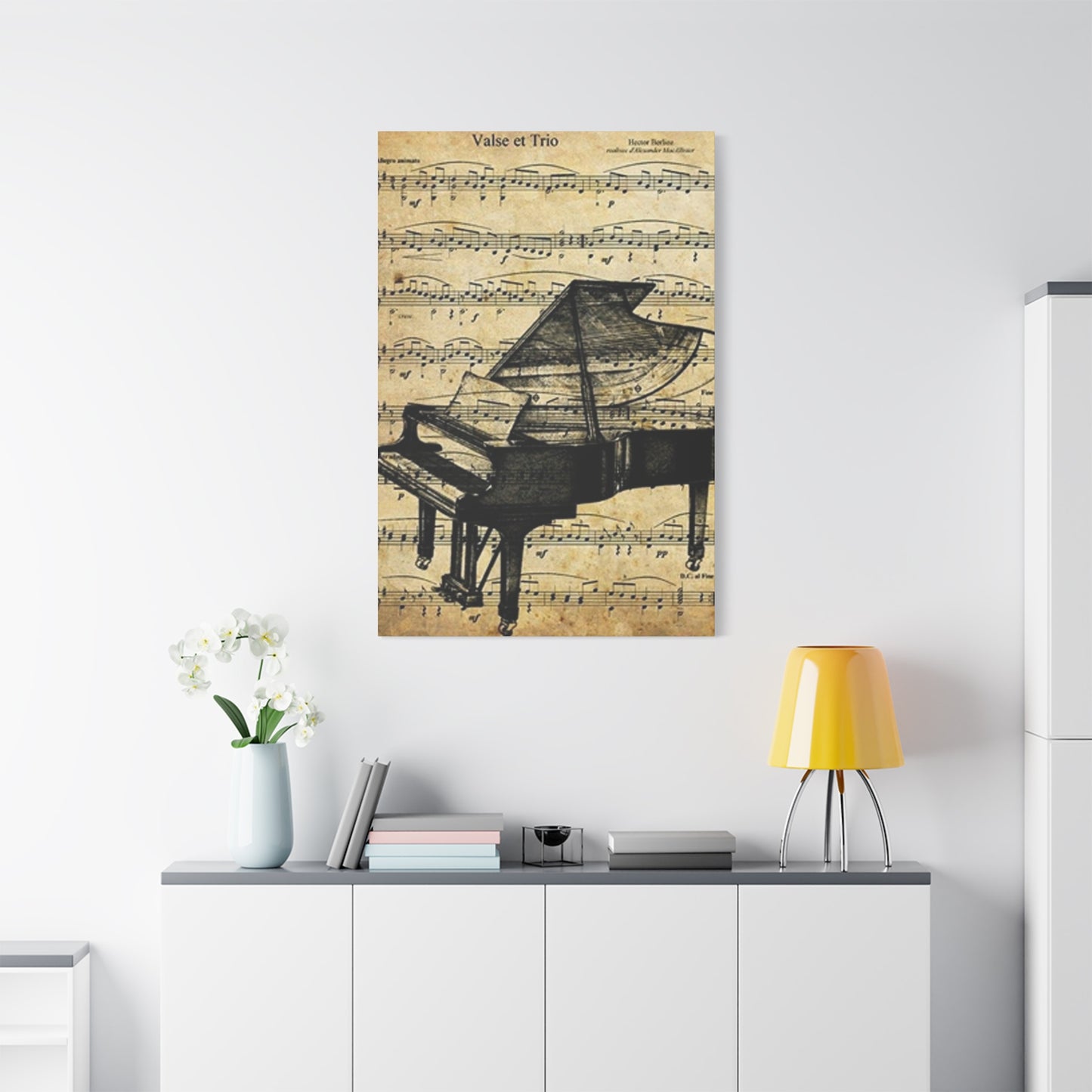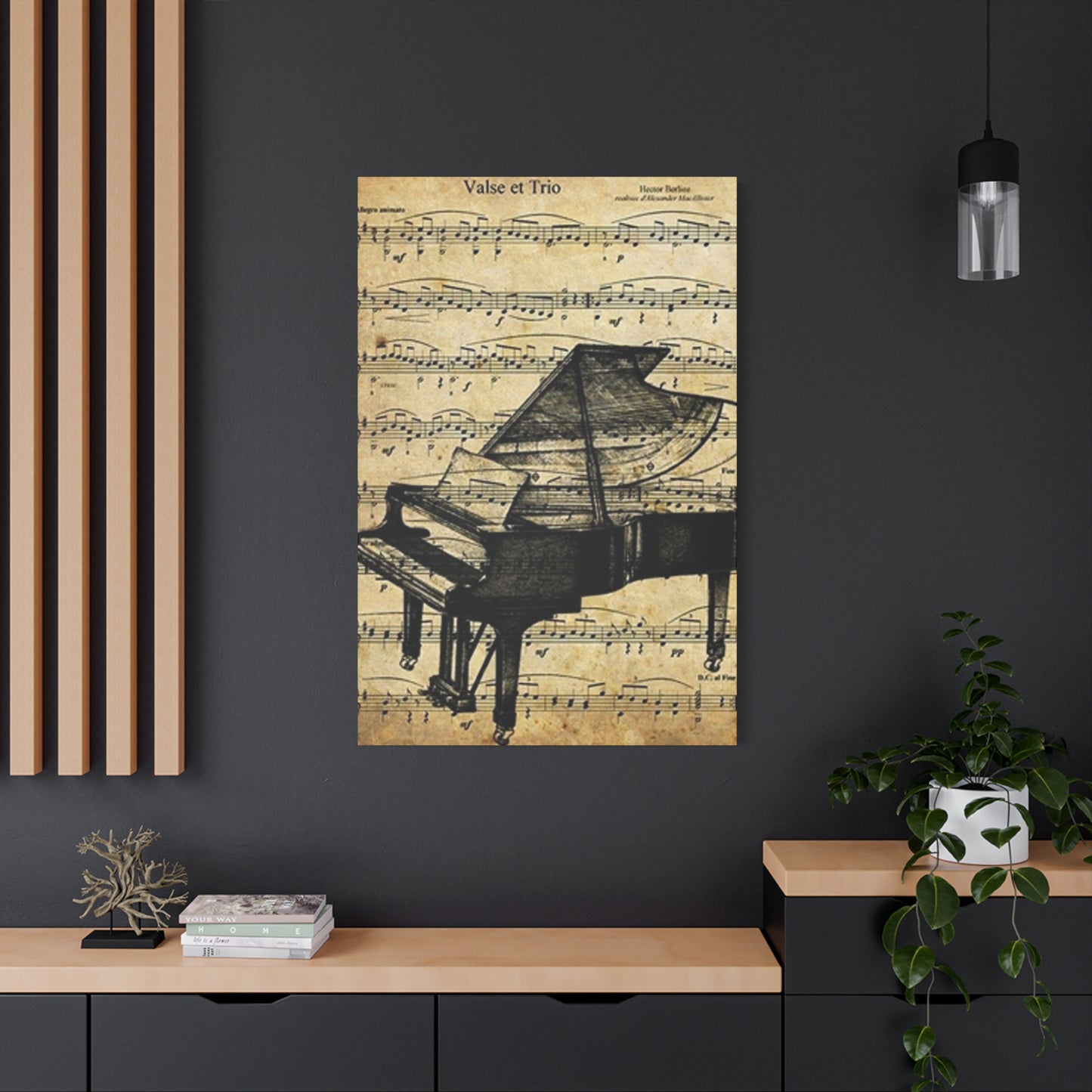Musical Notes And Piano Wall Art & Canvas Prints
Musical Notes And Piano Wall Art & Canvas Prints
Couldn't load pickup availability
Discover The Enchanting World Of Musical Notes And Piano Wall Art For Your Living Space
The profound connection between visual aesthetics and musical expression has captivated humanity for centuries, creating a bridge between two seemingly distinct art forms. When we examine the realm of home decoration and personal space enhancement, few elements possess the transformative power of musical notes and piano wall art. This comprehensive exploration delves into every facet of incorporating these magnificent pieces into your environment, from understanding their artistic significance to selecting the perfect arrangement that resonates with your soul.
The Mesmerizing Appeal Of Musical Notes And Piano Wall Art In Contemporary Interior Design
Musical themed decorative pieces have emerged as one of the most sought-after elements in modern interior styling, transcending conventional boundaries between auditory and visual appreciation. These captivating displays serve multiple purposes beyond mere ornamentation, functioning as conversation starters, personal statement pieces, and conduits for emotional expression. The intricate dance of notes across a canvas or the stark elegance of piano keys rendered in various mediums creates an atmosphere that speaks to both music enthusiasts and design aficionados alike.
The allure of these decorative elements stems from their universal language, speaking to individuals regardless of their musical background or expertise. Whether depicting the graceful curves of treble clefs, the mathematical precision of staffs and measures, or the monochromatic beauty of piano keys, each piece carries its own narrative. These artworks transform blank walls into dynamic spaces that pulse with rhythm and melody, even in silence.
Throughout residential and commercial spaces worldwide, designers have recognized the unique ability of musical imagery to create focal points that command attention without overwhelming the senses. The versatility of this genre allows for seamless incorporation into virtually any decorating scheme, from minimalist contemporary settings to richly appointed classical environments. This adaptability has cemented their position as timeless additions to any curated space.
Exploring Various Styles And Interpretations Of Keyboard Imagery In Visual Arts
The representation of piano keyboards in visual media spans an impressive spectrum of artistic interpretations, each offering distinct aesthetic qualities and emotional resonances. Abstract renditions often deconstruct the familiar black and white pattern into unexpected configurations, challenging viewers to reconsider their preconceptions about musical instruments. These avant-garde approaches might fragment keys across multiple panels, incorporate vibrant color palettes that deviate from traditional schemes, or manipulate perspective to create illusory depth.
Photorealistic depictions capture the intricate details of actual instruments, celebrating the craftsmanship inherent in piano construction. These works often showcase the subtle variations in ivory or synthetic key materials, the precise spacing between notes, and the play of light across polished surfaces. Such detailed representations appeal to purists who appreciate authenticity and the documentary quality of faithful reproduction.
Vintage-inspired pieces evoke nostalgia through deliberate aging effects, sepia tones, and compositions reminiscent of historical sheet music or concert hall photographs. These artworks transport viewers to bygone eras when piano performances represented the pinnacle of domestic entertainment and cultural refinement. The weathered aesthetics suggest stories of countless melodies played across generations, imbuing spaces with a sense of heritage and continuity.
Contemporary geometric interpretations reduce musical elements to their fundamental shapes, creating sleek compositions that emphasize line, form, and negative space. These minimalist approaches align perfectly with modern sensibilities, offering visual interest without complexity. The clean lines and restrained color palettes characteristic of this style contribute to serene, uncluttered environments.
Discovering The Perfect Dimensions And Placement Strategies For Maximum Visual Impact
Selecting appropriately sized artwork requires careful consideration of multiple spatial factors that influence visual harmony and proportion. Large-scale pieces measuring several feet across command attention and work exceptionally well above substantial furniture like sofas or beds, creating anchoring focal points that ground entire rooms. These expansive works make bold statements and serve as primary design elements around which other decorative choices orbit.
Medium-sized presentations offer flexibility, functioning effectively in various contexts from hallway galleries to office spaces. These versatile dimensions allow for both standalone display and incorporation into curated wall arrangements alongside complementary pieces. Their moderate scale prevents overwhelming smaller rooms while maintaining sufficient presence to capture interest and admiration.
Compact works excel in intimate settings or as components of larger gallery walls, where multiple pieces combine to create cohesive visual narratives. These smaller formats allow collectors to display diverse musical themes without committing extensive wall real estate, making them ideal for apartments or rooms with limited display space. Strategic clustering of several compact pieces can generate dynamic visual rhythm that mimics the flowing nature of musical compositions themselves.
Height placement significantly affects viewer engagement and room dynamics. The traditional guideline suggests positioning artwork so its center aligns with average eye level, approximately fifty-eight to sixty inches from the floor. However, context-specific adjustments account for furniture placement, ceiling height, and intended viewing positions. Above seating areas, allowing adequate clearance prevents the artwork from feeling disconnected from the furniture below while maintaining visual relationship between elements.
Examining Different Material Compositions And Their Distinctive Characteristics
Canvas remains among the most popular substrates for musical artwork, offering texture and depth that enhance visual interest. The woven fabric surface accepts various media from oils to acrylics, allowing artists to create pieces with dimensional brushwork that catches light dynamically throughout the day. Gallery-wrapped canvases, where the image continues around the edges, eliminate the need for framing while presenting a contemporary, finished appearance.
Metal prints have surged in popularity for their luminous quality and exceptional durability. The dye-sublimation process infuses images directly into specially coated aluminum surfaces, resulting in vibrant colors and remarkable detail clarity. These modern presentations resist fading and moisture damage far better than traditional paper-based prints, making them suitable for environments where longevity and minimal upkeep are priorities.
Wood panel substrates introduce organic warmth and tactile appeal to musical imagery. Whether presenting printed designs or serving as surfaces for direct painting, wood brings natural grain patterns that add another layer of visual complexity. Rustic reclaimed wood pieces particularly resonate with those seeking to blend musical themes with farmhouse or industrial aesthetic sensibilities.
Acrylic face-mounting creates stunning depth effects by sandwiching prints between transparent acrylic sheets and backing materials. This process produces gallery-quality presentations with exceptional color saturation and a glossy, contemporary finish. The dimensional quality of these pieces makes colors appear to float within the acrylic, creating captivating visual effects that shift with viewing angle and ambient lighting conditions.
Framed paper prints offer traditional elegance and extensive framing customization possibilities. The frame selection process allows for personalization that harmonizes with existing room decor, whether choosing ornate gilded frames for classical settings or sleek metal frames for modern spaces. Matting options provide additional customization, with color and width choices that enhance the artwork while creating visual breathing room.
Understanding Color Psychology And Its Influence On Musical Wall Decor Selection
Color selection profoundly impacts the emotional atmosphere created by musical wall art, with different hues triggering distinct psychological responses. Monochromatic black and white compositions evoke sophistication and timelessness, their stark contrast creating visual drama that commands attention. These classic combinations complement virtually any color scheme while maintaining focus on the musical elements themselves rather than competing chromatic elements.
Warm color palettes incorporating reds, oranges, and yellows generate energetic, passionate atmospheres reminiscent of jazz clubs and lively performances. These vibrant choices inject vitality into spaces, stimulating conversation and creative thinking. They work particularly well in social areas like living rooms or entertainment spaces where dynamic energy enhances the desired ambiance.
Cool tones including blues, greens, and purples promote tranquility and contemplation, making them excellent choices for private retreats like bedrooms or reading nooks. These calming hues encourage relaxation and mental clarity, supporting activities requiring concentration. The association between blue tones and musical melancholy or jazz adds thematic coherence to music-themed spaces.
Metallic accents in gold, silver, or copper introduce luxurious sophistication while catching and reflecting ambient light throughout rooms. These lustrous elements create visual movement and dimensionality, preventing static presentations. Metallic highlights prove especially effective in evening settings where artificial lighting activates their reflective properties.
Neutral palettes dominated by beiges, grays, and taupes provide subtle backgrounds that allow musical imagery to shine without overwhelming color competition. These understated choices support versatile decorating schemes and easily accommodate future design changes without requiring artwork replacement. Their adaptability makes them safe investments for those uncertain about committing to bolder chromatic statements.
Crafting Harmonious Gallery Wall Arrangements With Musical Themes
Creating compelling multi-piece displays requires thoughtful planning to achieve visual balance while maintaining individual piece integrity. Begin by laying out all components on the floor in various configurations, experimenting with spacing, orientation, and arrangement patterns before committing to wall installation. This preliminary planning prevents unnecessary wall damage from incorrect placement and allows for creative exploration without consequences.
Symmetrical arrangements provide orderly, formal presentations that suit traditional spaces and those preferring predictable structure. These configurations might feature identical pieces flanking a central larger work, or evenly spaced rows creating grid patterns. The resulting visual stability conveys organization and intentionality, appealing to those who appreciate mathematical precision.
Asymmetrical compositions offer dynamic energy and contemporary flair through seemingly casual arrangements that actually require careful attention to visual weight distribution. These layouts prevent monotony by varying piece sizes, orientations, and spacing intervals. Despite their informal appearance, successful asymmetrical walls balance visual mass across the display area, preventing lopsided compositions that feel unstable or incomplete.
Thematic cohesion unites disparate pieces through shared subjects, color palettes, or stylistic approaches. Musical gallery walls might progress from sheet music imagery through various instruments to performance scenes, creating narrative flow. Alternatively, maintaining consistent color schemes or framing styles while varying subjects generates unity through repetition rather than theme.
Proper spacing between pieces typically ranges from two to four inches, though this guideline flexes according to piece sizes and desired visual density. Closer spacing creates unified compositions where individual pieces function more as components of a larger whole, while generous spacing emphasizes each work's independence. Consider how spacing choices affect the overall impression, from busy and energetic to calm and considered.
Illuminating Your Musical Artwork With Strategic Lighting Solutions
Proper illumination transforms artwork from passive wall decoration to dynamic focal point, revealing details and creating atmospheric effects throughout different times of day. Natural lighting provides the truest color rendition but requires managing potential damage from prolonged ultraviolet exposure. Position pieces perpendicular to windows when possible to minimize direct sunlight contact, or utilize UV-filtering window treatments that protect artwork while maintaining light transmission.
Picture lights mounted directly above frames provide focused illumination that highlights artwork while creating dramatic shadowing effects. These dedicated fixtures come in various styles from traditional brass arms to contemporary LED strips, allowing selection that complements both artwork and surrounding decor. Adjustable models offer flexibility to direct light precisely where needed, accommodating different frame sizes and hanging heights.
Track lighting systems deliver versatile solutions for illuminating multiple pieces or allowing future arrangement changes without fixture relocation. The adjustable heads direct light at various angles, preventing glare while ensuring even coverage. Dimmable options provide control over ambiance, allowing bright illumination for detailed viewing or subdued lighting for atmospheric effects during entertainment.
Recessed spotlights create clean, architectural presentations without visible fixtures competing for attention. These built-in solutions work best in new construction or major renovations where ceiling modifications are feasible. The resulting streamlined appearance emphasizes artwork itself, with light sources disappearing into the architecture.
Ambient room lighting affects artwork appearance significantly, with warm incandescent bulbs casting yellow tones that alter color perception, while cool LED bulbs more accurately represent true colors. Consider the color temperature measured in Kelvins when selecting bulbs, with values around 3000K providing warm, cozy atmospheres, while 5000K approaching daylight clarity. Matching lighting temperature to the artwork's intended emotional effect enhances overall impact.
Incorporating Musical Notes And Piano Wall Art Into Various Room Settings
Living rooms benefit tremendously from musical artwork that serves as conversation catalysts and reflects inhabitants' passions. Large statement pieces above sofas create focal points that draw eyes upon room entry, immediately establishing the space's character. These primary works set tonal expectations and provide departure points for complementary decor selections throughout the room.
Bedrooms transform into personal sanctuaries when adorned with carefully selected musical imagery that resonates with occupants' tastes and promotes desired atmospheres. Gentle, flowing compositions in soothing colors support restful environments conducive to relaxation and sleep. Positioning artwork as the first thing seen upon waking and the last before sleeping creates powerful daily reinforcement of personal identity and values.
Home offices and creative studios gain inspiration from musical wall decor that stimulates innovative thinking and perseverance. The discipline required for musical mastery parallels the dedication needed for professional success, making these pieces particularly meaningful in work environments. Choosing energizing compositions in stimulating colors can combat afternoon lethargy and maintain motivation throughout demanding projects.
Music rooms and practice spaces achieve thematic coherence through artwork celebrating the craft pursued within those walls. These dedicated environments allow for more specialized selections that might feel too niche elsewhere, from detailed composer portraits to instrument anatomy diagrams. The resulting immersive atmosphere reinforces commitment to musical pursuits while creating inspiring surroundings.
Hallways and transitional spaces often suffer from decorative neglect despite offering excellent opportunities for creating gallery experiences. Musical artwork transforms these passages into curated exhibitions that reward movement through homes. The linear nature of hallways naturally accommodates progressive displays that unfold as viewers proceed, telling visual stories through sequential pieces.
Commercial environments including restaurants, hotels, and retail establishments leverage musical artwork to establish brand identity and customer experience. Jazz-themed restaurants might feature performance photography and vintage poster reproductions, while upscale hotels use elegant piano key abstractions to convey sophistication. These strategic selections contribute to comprehensive brand narratives that differentiate businesses from competitors.
Maintaining And Preserving Your Musical Wall Art Investment
Regular dusting prevents accumulation that dulls finishes and obscures details, with microfiber cloths providing gentle cleaning without scratching delicate surfaces. Avoid feather dusters that can leave residue or catch on textured surfaces, potentially causing damage. Weekly light dusting maintains appearance while preventing buildup requiring more aggressive cleaning methods that risk harm.
Canvas works tolerate minimal moisture but require caution to prevent water damage or mold growth. When necessary, slightly dampen cloths with water only, never applying liquid directly to artwork surfaces. Immediately follow with dry cloth passes to remove residual moisture. Avoid commercial cleaners unless specifically formulated for canvas art, as chemicals may interact adversely with paints or coatings.
Metal and acrylic pieces withstand more robust cleaning, often requiring only glass cleaner application to restore clarity and remove fingerprints. Spray cleaner onto cloths rather than directly on artwork to prevent liquid infiltration into edges or behind surfaces. Circular buffing motions prevent streaking while achieving even coverage across entire surfaces.
Framed pieces require attention to both artwork and frames, with wood frames benefiting from occasional furniture polish application that maintains finish luster and prevents drying. Glass or acrylic glazing needs regular cleaning using appropriate products that won't leave residue or cause clouding. Check frame backing periodically for dust intrusion or pest activity, addressing issues immediately to prevent artwork damage.
Environmental conditions significantly impact artwork longevity, with stable temperature and humidity levels preventing deterioration. Avoid hanging pieces near heating vents, fireplaces, or air conditioning units where temperature fluctuations and direct airflow accelerate aging. Maintain relative humidity between forty and fifty percent to prevent canvas warping or mold growth while avoiding excessive dryness that makes materials brittle.
Sourcing Authentic And High Quality Musical Wall Art Pieces
Online marketplaces offer vast selections spanning all price points and styles, though variable quality demands careful seller evaluation. Read reviews thoroughly, examining both positive and negative feedback patterns to identify reliable vendors versus problematic ones. Request detailed photographs showing actual items rather than stock images when purchasing significant pieces, ensuring expectations align with reality.
Local galleries and art fairs provide opportunities to examine pieces physically before purchasing, allowing assessment of colors, textures, and overall quality impossible through screen viewing. Direct artist interactions facilitate customization discussions and provide insights into creative processes and materials used. Supporting local artists strengthens community art ecosystems while often resulting in unique pieces unlikely to appear in others' homes.
Print-on-demand services enable custom creation from personal photographs or licensed designs, offering personalization impossible with mass-produced alternatives. These platforms typically provide multiple size and material options, allowing tailoring to specific spaces and preferences. Quality varies significantly between providers, making sample orders advisable before committing to large or expensive pieces.
Antique shops and vintage dealers occasionally yield remarkable finds including historical sheet music, concert posters, and musical instrument photography. These authentic pieces carry provenance and character that reproductions cannot match, often becoming treasured focal points and inheritance items. The hunt for perfect vintage pieces becomes an enjoyable pursuit in itself, combining decorating goals with treasure hunting excitement.
Commission opportunities with working artists result in completely unique pieces designed specifically for your space and vision. This collaborative process ensures perfect size, color palette, and thematic alignment with your environment and preferences. While typically more expensive than purchasing existing works, commissioned pieces offer unmatched personalization and the satisfaction of patronizing working artists.
Exploring The Symbolic Meanings Behind Musical Imagery In Visual Arts
Treble clefs symbolize melody, beauty, and the higher registers of musical expression, often associated with lightness and upward movement. Their elegant, flowing forms create instant visual recognition while suggesting grace and refinement. Spaces adorned with treble clef imagery often feel more delicate and feminine, though this association flexes according to surrounding design elements and color choices.
Bass clefs represent foundation, depth, and grounding elements that support musical structures, much as they provide rhythmic and harmonic underpinning in actual compositions. Their more angular, substantial forms convey strength and stability compared to treble counterparts. Including bass clef imagery balances spaces and appeals to those who appreciate the supporting roles that enable others to shine.
Piano keyboards embody duality through their contrasting black and white keys, representing the balance between opposites that creates harmony. This symbolism extends beyond music into life philosophy, suggesting that embracing both light and dark aspects creates complete, authentic existence. The linear progression of keys also represents life's journey, with each note a moment or experience contributing to overall composition.
Musical staffs and notes evoke the structured creativity inherent in musical composition, where rigid systems of notation enable infinite expressive possibilities. This paradox appeals to those who appreciate framework and rules as enablers rather than constraints. Displaying staff notation celebrates the intellectual dimension of musical pursuits alongside emotional and aesthetic components.
Instrument representations carry specific associations, with pianos suggesting sophistication, classical training, and domestic refinement. Grand pianos particularly convey luxury and serious musical commitment, while upright models feel more accessible and nostalgic. These distinctions allow selection of imagery that communicates desired messages about inhabitants' relationship with musical expression.
Coordinating Musical Wall Art With Existing Interior Design Schemes
Modern minimalist spaces benefit from clean-lined musical artwork emphasizing geometric simplicity and restrained color palettes. Monochromatic keyboard abstractions or single staff line compositions complement the uncluttered aesthetic while adding visual interest without complexity. The key lies in maintaining the discipline characteristic of minimalism while introducing sufficient personality to prevent sterile coldness.
Traditional interiors accommodate ornate framed prints and classical composer portraits that honor musical heritage and historical continuity. Rich wood frames with detailed carving complement period furniture and architectural elements, creating cohesive environments where all components reinforce the overall theme. Sepia tones and vintage reproduction styles enhance authenticity and temporal consistency.
Industrial loft spaces embrace raw metal prints and exposed mounting hardware that celebrate structural honesty and urban edge. Musical imagery with mechanical elements like piano action diagrams or deconstructed instrument views align with the industrial aesthetic's appreciation for functional beauty. Oversized scale and bold compositions suit the generous proportions typical of converted commercial spaces.
Bohemian and eclectic environments thrive on unexpected combinations and layered visual complexity, making them ideal settings for diverse musical art collections. Mix photographic prints with abstract paintings, vintage sheet music with contemporary graphics, and various sizes in asymmetric arrangements. The resulting visual richness reflects the philosophy of embracing diverse influences and rejecting rigid design rules.
Scandinavian-inspired spaces seek balance between minimalism and warmth, often achieved through natural materials and muted color palettes punctuated by strategic accent pieces. Musical artwork in soft grays, whites, and natural wood tones maintains the Nordic aesthetic while personalizing otherwise spare environments. Simple compositions prevent overwhelming the intentional restraint characteristic of this popular style.
Creating Personalized Musical Wall Art Through Custom Approaches
Personal photograph transformation allows converting cherished musical memories into permanent wall displays. Images from recitals, concerts attended, or beloved instruments receive professional printing treatments that elevate them from snapshots to gallery-worthy presentations. This approach creates deeply meaningful pieces that trigger specific memories and emotional responses unique to their creators.
Sheet music from significant pieces, whether performed, composed, or simply loved, becomes artistic material through creative framing and presentation. Matting selections highlight particular measures or phrases, while multiple sheets arranged in grid patterns create larger compositions. Original manuscripts or first editions carry particular significance, though reproductions serve equally well when focused on musical rather than collectible value.
Lyric displays celebrate favorite songs through typographic treatments that transform words into visual art. Font selections, layouts, and accompanying graphics convey the song's mood and genre, from handwritten script for intimate ballads to bold block letters for rock anthems. These pieces particularly resonate with those whose connections to music emphasize verbal content alongside melodic elements.
Custom commissioning of original artwork allows complete control over every aspect from size and colors to specific instruments or musical elements depicted. Collaborating with artists to develop concepts ensures final pieces perfectly suit both spaces and personal tastes. The process itself becomes meaningful, with each decision point reinforcing connections between creator, artist, and finished work.
Digital creation using graphic design software empowers technically inclined individuals to produce their own musical artwork without traditional artistic skills. Countless tutorials guide beginners through processes for creating everything from simple motivational quote designs to complex photomontages incorporating musical elements. Print services then transform digital files into physical artwork ready for hanging.
Understanding Scale And Proportion In Musical Wall Art Selection
Room size significantly influences appropriate artwork dimensions, with small spaces requiring restraint to prevent overwhelming limited square footage. In compact areas, single medium pieces or collections of small works prevent crowding while providing visual interest. Opting for vertical orientations in rooms with limited width helps maintain openness while achieving adequate artwork presence.
Ceiling height affects both artwork size and placement decisions, with generous vertical space accommodating taller pieces that might overwhelm standard eight-foot ceilings. High-ceilinged rooms actually require larger artwork to maintain visual proportion, as standard-sized pieces appear diminished against expansive wall areas. Consider the viewing distance as well, with pieces in large rooms needing bolder compositions and larger scale to register effectively.
Furniture scale provides reference points for appropriate artwork sizing, with general guidelines suggesting artwork spanning two-thirds to three-quarters the width of furniture below. This proportion creates visual connection between elements while preventing either from appearing disproportionate to the other. Multiple smaller pieces arranged to achieve this width work equally well as single large pieces.
Negative space around artwork affects its visual impact, with generous surrounding area allowing pieces to breathe and command attention. Crowding artwork with nearby furniture, architectural features, or other wall decorations diminishes its effectiveness and creates cluttered appearances. Allowing adequate margin prevents competition between elements while enabling each to shine independently.
Multiple wall syndrome, where available space far exceeds artwork quantity, tempts filling every surface to eliminate blank areas. Resist this impulse, as strategic emptiness enhances displayed pieces by providing visual rest areas that prevent overwhelming viewers. Curate displays thoughtfully rather than exhaustively, ensuring each piece earns its placement through merit rather than merely filling available space.
Investigating The Connection Between Musical Themes And Personal Identity Expression
Musical preferences reveal personality aspects ranging from preferred energy levels to cultural affiliations and generational identities. Displaying musical wall art that reflects these preferences broadcasts identity to visitors while reinforcing self-perception through daily environmental exposure. The specific genres, instruments, or musical eras chosen communicate nuanced information about values, experiences, and aspirations.
Musician identity finds validation through musical artwork that celebrates the craft and dedication required for musical pursuit. Those who play instruments or sing connect deeply with imagery depicting their particular specialties, seeing reflections of their own commitments and struggles. These pieces serve as constant reminders of chosen paths and motivators during challenging practice periods.
Music listener identity equally deserves acknowledgment and expression, with devoted fans feeling connections to music as profound as performing musicians. Artwork celebrating favorite genres, artists, or concert experiences validates these relationships and creates physical anchors for intangible emotional connections. The resulting environments feel authentically aligned with inhabitants' true selves rather than decorated according to generic formulas.
Family musical heritage carries forward through displays honoring ancestors' musical involvement or passed-down instruments. Photographs of grandparents at pianos or parents performing create living connections with family history while inspiring younger generations to continue traditions. These personal pieces ground families in narratives larger than individual lives, creating continuity across time.
Aspirational identity expression allows displaying artwork representing desired rather than current musical engagement, functioning as motivation toward goals. Someone aspiring to learn piano might surround themselves with keyboard imagery as daily reminder and commitment device. This approach harnesses environment's power to shape behavior and self-concept through consistent visual reinforcement.
Examining Color Coordination Between Musical Art And Room Palettes
Complementary color schemes pair artwork hues directly opposite each other on color wheels, creating vibrant, high-energy contrasts that command attention. Musical pieces with orange or yellow elements pop dramatically against blue walls, while purple artwork sings against yellow backgrounds. These bold combinations suit spaces intended for stimulation and activity rather than relaxation.
Analogous palettes use colors adjacent on color wheels, producing harmonious, soothing combinations with subtle variety. Blues, greens, and teals flow together seamlessly, as do reds, oranges, and yellows. Musical artwork in these ranges blends elegantly with coordinated wall colors while maintaining sufficient distinction to register as independent elements rather than disappearing into backgrounds.
Monochromatic approaches employ single hues in varying saturations and values, creating sophisticated, unified appearances. Black and white musical imagery particularly excels in monochromatic settings, with its inherent contrast providing visual interest within restrained color parameters. These schemes feel intentional and curated, appealing to those who appreciate subtlety and refinement over bold statements.
Accent color strategy utilizes artwork to introduce splashes of color that contrast with otherwise neutral rooms. A vibrant musical piece featuring reds or blues becomes the room's color story, with perhaps a few coordinating accessories echoing the accent hue. This approach allows dramatic color impact while maintaining flexibility, as changing the artwork refreshes the entire space.
Neutral bridging employs artwork containing both room colors and additional hues, functioning as visual bridges that unify spaces. Musical pieces with backgrounds matching wall colors but featuring elements in furniture or accent tones create cohesion while adding visual complexity. This sophisticated approach requires careful selection but produces remarkably harmonious results.
Utilizing Feng Shui Principles In Musical Wall Art Placement
Eastern directional associations suggest specific wall placements for different life aspirations, with south walls governing fame and reputation. Musical artwork in these locations potentially enhances recognition for musical talents or broader creative endeavors. Fire element colors including reds, oranges, and purples align with southern energy, amplifying desired effects.
North walls govern career and life path according to feng shui philosophy, making them appropriate locations for musical artwork when music plays central roles in professional lives. Water element colors like blacks, blues, and dark tones harmonize with northern energy, supporting career advancement and purposeful direction. Piano imagery particularly suits these placements given instruments' dark typical coloring.
Eastern walls relate to family and health, appropriate for musical pieces commemorating family musical traditions or instruments passed through generations. Wood element colors including greens and browns coordinate with eastern energy, promoting growth and vitality. Incorporating natural wood frames or materials strengthens elemental alignment.
Western walls connect to creativity and children, making them ideal locations for musical artwork regardless of its specific content given music's inherently creative nature. Metal element colors like white, gray, and metallics complement western energy, supporting creative expression and generative capacity. Piano key imagery with its black and white contrasts suits this placement particularly well.
Central areas correspond to overall health and grounding, benefiting from musical pieces that feel personally centering and balancing. Earth element colors including yellows, beiges, and earth tones harmonize with central energy, promoting stability and well-being. Musical artwork depicting natural materials or warm tones supports these qualities.
Incorporating Three Dimensional Musical Elements Alongside Wall Art
Sculptural musical decorations add dimensional variety to wall displays, preventing the visual flatness that sometimes plagues exclusively two-dimensional presentations. Metal treble clef sculptures, wooden musical note cutouts, or dimensional staff line installations create shadow play and depth that changes with lighting throughout the day. These elements bridge the gap between wall art and room decor, connecting displays to surrounding spaces.
Floating shelf installations provide platforms for combining wall-mounted artwork with three-dimensional musical objects like small instruments, metronomes, or music boxes. These curated vignettes create layered visual interest while allowing flexibility to rotate displayed objects seasonally or as collections evolve. The shelves themselves become design elements, with material and finish selections contributing to overall aesthetics.
Shadow box frames enable displaying three-dimensional musical ephemera including concert tickets, instrument parts, medals from competitions, or cherished sheet music. These deep frames protect contents while creating miniature museum exhibitions of personal musical history. The dimensional quality draws viewers closer for detailed examination, increasing engagement beyond what flat artwork typically achieves.
Instrument displays, whether playable or decorative, serve as living artwork celebrating musical forms and craftsmanship. Wall-mounted guitars, violins, or brass instruments become sculptural focal points while remaining functional for those who play. Even non-functional decorative instruments contribute visual interest and thematic reinforcement, their three-dimensional presence creating dynamic visual complexity.
Mixed media installations combine multiple elements into cohesive presentations transcending single pieces' capabilities. Imagine musical staff lines created from metal tubing mounted on walls, with magnetic note symbols that rearrange to display different melodies. Or consider combining vintage sheet music framing with projecting elements creating partial three-dimensionality. These creative approaches yield unique statements impossible to purchase ready-made.
Researching Artist Backgrounds And Artistic Movements Influencing Musical Wall Art
Abstract expressionism's influence appears in musical artwork emphasizing emotional content over representational accuracy, with bold brushstrokes and expressive color applications conveying musical feelings rather than depicting instruments or notation literally. These pieces resonate with those valuing emotional authenticity and spontaneous creative expression, mirroring jazz improvisation's spirit in visual form.
Pop art traditions inform musical pieces featuring bold colors, graphic compositions, and sometimes ironic or playful treatments of musical subjects. Andy Warhol's celebrity portraits find echoes in contemporary musical artist imagery, while Roy Lichtenstein's comic book aesthetics influence graphic musical notation treatments. These works celebrate popular culture while commenting on mass media's role in musical dissemination.
Photorealism movements contribute highly detailed musical instrument and performance depictions that showcase technical mastery while prompting viewers to reconsider familiar subjects through intensified scrutiny. The painstaking accuracy required for photorealistic work parallels musical practice's discipline, creating thematic alignment between subject matter and execution approach. These pieces appeal to those appreciating technical virtuosity and patient craftsmanship.
Minimalism's less-is-more philosophy produces musical artwork stripped to essential elements, perhaps single staff lines, isolated notes, or geometric piano key abstractions. The resulting visual quietude mirrors minimalist music's repetitive structures and gradual variations. These pieces suit contemporary spaces and appeal to those finding beauty in restraint and essential forms.
Street art and graffiti influences inject urban energy into musical wall art through spray paint aesthetics, bold graphic elements, and rebellious attitudes. Music and street art share countercultural roots and overlapping communities, making their visual fusion natural and authentic. These pieces bring gritty vitality to spaces, appealing to younger demographics and those identifying with alternative cultural movements.
Evaluating Investment Potential In Musical Wall Art Collections
Limited edition prints maintain value better than unlimited reproductions through scarcity-created demand. Numbered editions with artist signatures authenticate pieces while limiting availability, factors that support secondary market values. When selecting pieces with investment considerations, verify edition sizes and obtain certificates of authenticity documenting legitimacy and provenance.
Original artwork by emerging artists represents speculative investments with potentially substantial returns if artists achieve recognition and market success. Researching artists' exhibition histories, critical reception, and gallery representations helps identify promising talents before widespread discovery drives prices upward. However, buying primarily for investment rather than personal appreciation risks acquiring pieces that fail to enhance daily living even if financial returns materialize.
Vintage musical posters and advertising materials from significant performances or venues attract collector interest, with value determined by rarity, condition, and historical importance. Original concert posters from legendary performances or now-demolished venues command premium prices, while reproductions hold minimal monetary value regardless of visual appeal. Authenticating vintage pieces requires expertise, making consultation with specialists advisable for significant purchases.
Condition dramatically impacts artwork value, with damage, fading, or restoration attempts reducing worth substantially. When acquiring pieces with investment considerations, thoroughly document condition through photographs and professional appraisals. Maintain proper environmental conditions to prevent deterioration that diminishes both aesthetic appeal and monetary value.
Market trends affect musical artwork values as genres experience popularity cycles and decorating fashions evolve. Jazz-themed pieces surged during recent vintage aesthetic popularity, while classical music imagery maintains steady demand from established collectors. Following market trends while selecting pieces that genuinely resonate personally balances investment prudence with living environment quality.
Discovering Uncommon Musical Themes Beyond Traditional Piano Imagery
Orchestral instrument collections create educational and visually diverse displays celebrating musical variety beyond keyboard focus. Arranging pieces depicting violins, cellos, trumpets, and flutes in coordinated presentations demonstrates musical breadth while creating dynamic visual variety through different instrument shapes and colors. These collections appeal to those with comprehensive musical interests or ensemble performance backgrounds.
Jazz club photography captures performance energy and cultural significance of this uniquely influential genre. Smoky venue atmospheres, intense performer expressions, and vintage fashion elements combine to transport viewers to specific times and places. These pieces suit entertainment spaces and appeal to jazz enthusiasts valuing the genre's improvisational spirit and cultural heritage.
Opera and theatrical performance imagery celebrates music's dramatic dimensions through costume, staging, and expressive performer portrayals. These grand, often colorful pieces suit formal spaces and appeal to those who appreciate music's narrative and visual components alongside pure sound. The dramatic flair inherent in opera finds natural visual expression that translates effectively to wall art.
World music themes expand Western classical and popular focus to embrace global musical diversity. Instruments like sitars, djembes, or pan pipes introduce unfamiliar shapes and cultural contexts, educating while decorating. These pieces appeal to world music enthusiasts and those valuing cultural diversity and global perspective.
Musical notation evolution displays showcase historical development from ancient neumes through contemporary graphic scores, appealing to music historians and those fascinated by communication system evolution. These intellectual pieces stimulate conversation while demonstrating that musical notation, like written language, continually adapts to serve changing creative needs.
Conclusion
Rotating artwork seasonally prevents visual stagnation while allowing larger collections' full enjoyment without simultaneous display. Summer might feature bright, energetic pieces evoking outdoor concerts and festivals, while winter brings contemplative pieces suggesting quiet fireside performances. This approach maximizes collections' value while maintaining fresh, dynamic environments.
Storage solutions for non-displayed artwork protect pieces from damage while keeping them accessible for future rotation. Acid-free materials prevent paper deterioration, while proper climate control prevents mold growth, insect infestation, or temperature-induced warping. Original packaging often provides ideal storage, or specialized art storage boxes offer archival-quality protection.
Documentation systems tracking rotation schedules ensure all pieces receive display time while preventing excessive handling of delicate works. Simple spreadsheets noting installation and removal dates help balance display among collection pieces. Photographing arrangements before dismantling aids reassembly or provides inspiration for future configurations.
Maintenance during rotation provides opportunities for cleaning, condition inspection, and any necessary repairs before storage. Addressing minor issues promptly prevents escalation into major damage requiring professional restoration. This regular attention extends collection longevity while ensuring displayed pieces always appear their best.
Acquisition planning considers rotation systems, purchasing pieces that coordinate within subgroups sharing colors, styles, or themes. These curated clusters allow swapping complete displays rather than individual pieces, simplifying rotation while maintaining visual cohesion in each configuration.
Share

